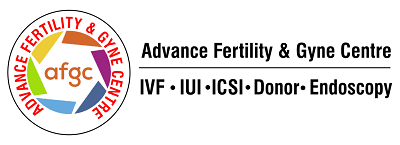Fertility Assessment: Key Steps to Evaluate Your Fertility
What a Fertility Assessment Involves
When a couple considers fertility options — whether naturally conceiving or through assisted methods like IVF — a fertility assessment acts as a roadmap. It helps both partners understand where they stand and what potential challenges may lie ahead. The assessment typically covers medical history, lifestyle factors, basic tests for both partners, and targeted investigations based on those results. The idea is to determine how readily conception may occur, and what interventions might be needed. In my view, the most essential “basic fertility tests” are: for women – egg reserve (via AMH, antral follicle count, age, tubal test, transvaginal ultrasound) and for men – sperm analysis; together these give a good first-look prognosis for the couple.
Fertility Assessment for Women: Hormones & Ovarian Reserve
For the woman, fertility assessment begins with history (age, menstrual regularity, past pregnancies or losses, surgeries, pelvic infections, lifestyle, any known PCOS or endometriosis) and then moves into examining ovarian reserve, tubal patency, uterine anatomy and hormonal status.
Ovarian reserve & hormonal markers
One of the key pillars is measuring Anti‑Müllerian Hormone (AMH). It is produced by ovarian granulosa cells and correlates strongly with the number of growing follicles — i.e., the “functional ovarian reserve.” PMC+2PMC+2 Studies note that AMH declines with age, and lower values suggest fewer remaining follicles. However, AMH cannot reliably predict the chance of pregnancy or live birth: it speaks to quantity more than egg quality. PubMed+1
In addition to AMH, antral follicle count (AFC) via transvaginal ultrasound is another major marker. A review found that both AMH and AFC are among the most accurate predictors of how the ovaries will respond to stimulation in assisted reproduction. BioMed Central+1
So in my approach: I always ask about age (since age is the strongest predictor of egg quality and reserve), ask for AMH and AFC (or ask the clinic to do them), and also look at hormonal levels (FSH, LH, estradiol) and look at the tubes (by HSG/hystero‐salpingography or laparoscopy if needed) and pelvic ultrasound to assess uterus & ovaries. This gives a basic “prognosis” of how many eggs you may have and how favourable your anatomy is.
Tubal and uterine assessment
Even if ovarian reserve is good, blocked tubes or uterine issues (fibroids, polyps, adhesions) can hamper fertility. So a tubal patency test (HSG or hystero‐contrast sonography) and a transvaginal ultrasound (for uterine structure, ovarian cysts, endometriosis signs) are essential in the assessment.
Thus the woman’s fertility workup comprises: age + menstrual history + lifestyle + AMH/AFC + ultrasound + tubal test + hormonal panel. With all this, I believe we can do a basic analysis of prognosis — how likely conception spontaneously or with assistance might be, whether time is short, and whether early intervention is wise.
Fertility Assessment for Men: Sperm Analysis & More
Male fertility assessment often gets overlooked, but in fact male factors account for ~20 % of infertility cases and contribute in another ~30%. PMC+2AUA+2 The starting point is a detailed history (childhood issues, infections, surgeries, lifestyle, smoking, alcohol, heat exposure), physical examination (testes, varicocele, duct anomalies), and semen analysis.
Semen analysis
A semen analysis is considered the cornerstone of male fertility workup. Medscape+1 It measures semen volume, sperm concentration, motility (progressive movement), morphology (shape), vitality, and may include leukocyte count, pH, and other markers. ScienceDirect+1 The latest World Health Organization (WHO) 6th edition of the semen analysis manual updated procedures and emphasized that the 5th percentile lower limits alone shouldn’t define infertility but must be combined with clinical context. PMC+1
In my viewpoint: While the woman’s egg reserve gives a sense of “how many eggs you might retrieve or have left”, the sperm test tells us “how decent the entry ticket is”. If sperm numbers, motility or morphology are low, we anticipate needing either assisted reproductive technologies (ART) or lifestyle/medical interventions. So yes – basic sperm analysis plus a clinic review is essential and gives another part of the prognosis.
Additional male tests
If semen analysis is abnormal, further tests may include hormonal evaluation (FSH, LH, testosterone), genetic tests, testicular ultrasound, or sperm DNA fragmentation tests. AUA+1 But for a “basic fertility assessment”, I usually work with the semen analysis plus history/physical exam as first step.
When to Consider a Fertility Assessment
From a practical viewpoint: if you’ve been trying to conceive for 12 months (or 6 months if the woman is over 35) without success, an assessment is recommended. Also if one partner has known fertility risk factors (older age, PCOS, endometriosis, previous surgery, smoke/drink heavily, male partner with testicular history) then earlier assessment is sensible.
In my practice I tell couples: “You don’t have to wait until a year if you already have risk factors. Taking a fertility assessment earlier gives you more options and time.” The basic tests – egg reserve for the woman, sperm test for the man – help define urgency and likely next steps. If the egg reserve is already low, you don’t want to delay and lose more time; if sperm is fine but tubes are blocked, intervening early matters.
How Fertility Assessment Results Guide Treatment
Once the assessment is done, you have a clearer prognosis. For example:
- If the woman’s AMH and AFC are good, and tubes are open, and semen is normal → then optimising lifestyle (good diet, normal weight, no smoking, moderate exercise) + timed intercourse may suffice for some time.
- If the egg reserve is moderate/low (low AMH/AFC) or age is advanced or tubes are blocked → we may recommend moving quickly to IVF or considering egg freezing or donor eggs.
- If semen analysis is poor (low count or motility) but female side is fine → then male interventions (varicocele repair, hormone treatment) or moving to IUI/IVF may be considered.
- If both partners have issues → you may jump to more advanced options immediately.
In my template: when I write the plan, I include the results of the assessment, what they mean (eg. “Your egg reserve suggests 5–7 good eggs likely in an IVF cycle” or “Sperm count is normal but motility is borderline, we recommend lifestyle change + repeat in 3 months”), and then propose the timeline for next steps.
Essentially the fertility assessment gives you a roadmap, not a guarantee. For example, AMH may tell you about quantity but not quality of the eggs. ASRM Similarly a “normal” semen analysis does not guarantee natural conception but improves odds. So conversation and expectations are key.
Final Thoughts
In summary, fertility assessment is a vital first step for any couple wanting clarity. For women, it’s about egg reserve (AMH, AFC, age, hormonal tests), tubal and uterine anatomy, and lifestyle. For men, it’s about detailed history, physical exam and semen analysis. When combined, these tests give a basic prognosis — you understand how many good eggs may be left, how healthy the sperm are, and whether time is on your side or not. From there the doctor and the couple can make informed decisions about lifestyle, timing, and whether to consider treatments like IVF earlier rather than later.
My view has always been: you can’t freeze time, but you can get good clarity. The sooner you know where you stand, the better you can plan and avoid surprises. With assessment, you enter the fertility journey with data, not just hope.
References
- van Dorp W, Broekmans F, actuarial review: “Anti-Müllerian Hormone and Ovarian Reserve: Update on Assessing …” PMC, 2020. PMC
- Broekmans F et al. Ovarian reserve testing: A review of the options, their applications … PMC, 2019. PMC
- Practice Committee Opinion: Testing and interpreting measures of ovarian reserve. ASRM, 2020. ASRM
- Kelsey T. et al. Genetic determination of the ovarian reserve: literature review. Ovarian Research, 2021. BioMed Central
- Semen Analysis: Updates From the WHO Sixth Edition. PMC, 2023. PMC+1
- “Male Fertility Evaluation: What do I need to know?” ReproductiveFacts, 2023. Reproductive Facts
- Diagnosis and treatment of infertility in men: AUA/ASRM guideline. 2020. ASRM
Additional review of AMH: “Investigating the Clinical Utility of the Anti-Müllerian Hormone …” PMC, 2022. PMC

